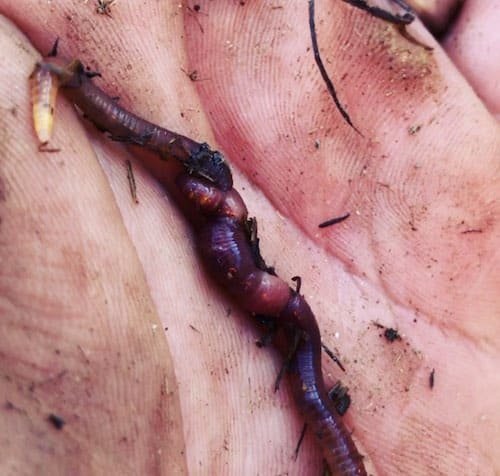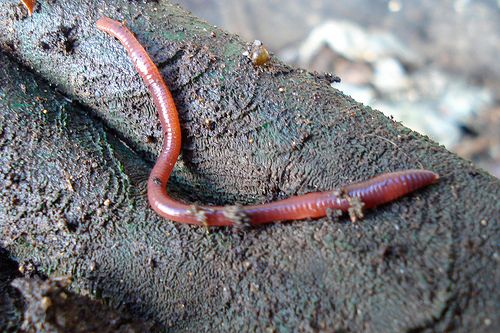Unlock the Tricks of Red Wigglers: Your Guide to Composting Success
The assimilation of red wigglers right into composting methods presents a substantial possibility for improving soil wellness and promoting sustainability. Understanding their demands and habits is important for optimizing their possibility, from setting up an appropriate worm container to feeding them the best materials.

What Are Red Wigglers?
Belonging To North America, they are often discovered in decaying leaves and garden compost piles, where they play a critical function in nutrient recycling. Their adjustment to living in a damp, cardio atmosphere allows them to consume big amounts of organic waste, simplifying right into nutrient-rich spreadings that enhance dirt wellness.
Red wigglers replicate swiftly, with a single worm with the ability of generating several cocoons each week, each consisting of numerous hatchlings. This rapid reproduction price adds to their effectiveness in composting operations. They like temperature levels between 60 ° F and 80 ° F, and their activity degree raises significantly within this variety, additional assisting in the decomposition process. Comprehending the biology and habits of red wigglers is crucial for optimizing their potential in composting applications.
Advantages of Utilizing Red Wigglers
Using the power of red wigglers in composting supplies many benefits that enhance soil health and promote sustainable waste management. These remarkable organisms efficiently damage down raw material, changing kitchen area scraps and lawn waste into nutrient-rich vermicompost. This finished product is incredibly beneficial for plant development, as it boosts dirt structure, enhances moisture retention, and enhances vitamins and mineral schedule.

Establishing Your Worm Bin
Developing an efficient worm container is a simple process that can substantially enhance your composting initiatives. The primary step is selecting an appropriate container. Worm containers can be made from plastic storage containers, wooden boxes, or readily available worm bins. Make certain the bin has ample drainage and air flow openings to maintain ideal dampness levels and air movement.
Next, prepare the bedding material, which works as the worms' environment. A mix of shredded newspaper, cardboard, and coconut coir works well, supplying a comfy setting for the worms. Objective for a bed linen deepness of concerning 4-6 inches. Moisten the bedding lightly, ensuring it looks like a wet sponge without excess water merging near the bottom.

Feeding Your Red Wigglers
To ensure the wellness and efficiency of your red wigglers, it is necessary to offer them with a balanced diet regimen that satisfies their nutritional demands. Red wigglers flourish on a varied variety of organic products, which not only supply needed nutrients but additionally advertise efficient composting.
Beginning by integrating cooking area scraps such as veggie peels, fruit cores, and coffee grounds. Prevent citrus fruits, onions, and garlic, as these can be harmful to worm wellness. Furthermore, introduce shredded paper, cardboard, and dry fallen leaves to develop a well-aerated setting.
Feeding frequency must be monitored; generally, worms can consume half their body weight in food weekly. It is important to avoid overfeeding, as excess food can bring about unpleasant smells and attract parasites. A good technique is to add food in little quantities, enabling worms to refine it prior to introducing extra.
Maintaining wetness degrees is also crucial; the bedding ought to perspire but not soggy. Last but not least, be sure to on a regular basis check the temperature and pH degrees of the container to ensure an ideal atmosphere for your red wigglers, inevitably enhancing their composting effectiveness.
Harvesting and Utilizing Compost
A successful composting procedure with moved here red wigglers finishes in the abundant, dark compost called vermicompost, which can considerably enhance soil health and plant development. Collecting this nutrient-dense material usually happens every three to 6 months, relying on the dimension of your system and the amount of raw material being refined.
To gather, gently different the garden compost from the worms and any type of undecomposed materials. One reliable approach includes moving the materials of the container to one side and including fresh bed linen and food to the void, urging the worms to migrate. After a few days, the garden compost can be gathered from the opposite side.
It is crucial to make use of vermicompost properly to optimize its advantages. It can be used as a leading dressing for yard beds, blended right into potting dirt, or made into a nutrient-rich fluid fertilizer called "worm tea." This application method aids to provide important nutrients straight to plant roots, advertising healthier development. By integrating vermicompost right into your gardening routine, you not only reuse organic waste yet likewise develop a successful community that sustains sustainable horticulture practices.
Verdict
In recap, red wigglers offer as phenomenal allies in composting efforts, transforming organic waste into nutrient-rich vermicompost. By understanding the optimal conditions for their habitat, feeding requirements, and compost harvesting techniques, gardeners can boost dirt wellness and advertise plant vigor.
Comments on “Enhance Your Lawn’s Health and Beauty with Red Wiggler Express Lawn Care Solutions”